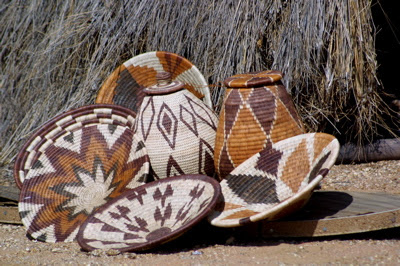
The Power comes from women. Even if a man reigns on the throne, one recognizes nevertheless the dignity of the woman as a source of power. It is from her that power emanated.
Banze Mukangala (a luba male office holder)
The 8th March is International Women's Day and although I already know this, I find myself sitting here thinking, a women's life is really tough! We have to be so many things to so many different people and we are expected to balance them perfectly and come out smiling at the other end. Well, I don't know about you but I am exhausted! I have decided that I want to be a man! and have his compartmentalised brain, that can only concentrate on one thing at a time rather than be a woman trying to deal with a multitude of things all at the same time.
When I was growing up, the women that I admired around me, were those that I considered to be very hardworking. They were leaders in their professions. My mother (like most mothers) for instance, was very talented. She was a brilliant chef, a nurse, a cleaner, an accountant, an advisor, a counsellor, a critical friend, a wise woman, and a wife. I admired her dearly and most of all I respected her strength of character.
When I look at the Zulu women of South Africa and the Luba women from the Democratic Republic of Congo, I share the same respect and admiration for them acknowledging the different circumstances, vulnerabilities and the roles they played within their respective societies.
Luba women were important members of their society. In Luba art women were held in high esteem, respected and honoured as spiritual magnates. Female representations were in an array of art forms in a wide variety of poses and contexts. They served as priestesses, political advisers, ambassadors, and also as wives and mothers. In addition to these roles, their bodies served as spirit vessels for deceased males;
Only the body of a woman is strong enough to hold a spirit as powerful as that of a king.
Ngeleka (a Luba male titleholder)
Need I say more?
Zulu women also play an important and crucial role within the nation of the Zulu people. These women are the backbone of the family. They undertake all aspects of domestic life as well as raise the children, look after the elderly and still make money for the family with their skilled artistry. In addition to this they often have to undertake hard manual labour, such as growing crops, looking after livestock and chopping and collecting firewood and water. They do all of this whilst their husbands simply go to work in the cities. Most Zulu women are not allowed to go to work, as it is the belief that a women’s place is in the home. However, this is gradually changing in South Africa and more and more women are going to work in the cities.
Zulu women are renowned nationally and internationally for their weaving of the fabulous beer baskets and bowls. With the help of charitable organisations Zulu women have taken their traditional art and turned it into a means of supplementing their incomes.
There we have it, two examples of the power of women. Did I hear someone say......who needs men?
One is not born beautiful, but rather becomes beautiful over the course of a lifetime.
Luba Proverb





















